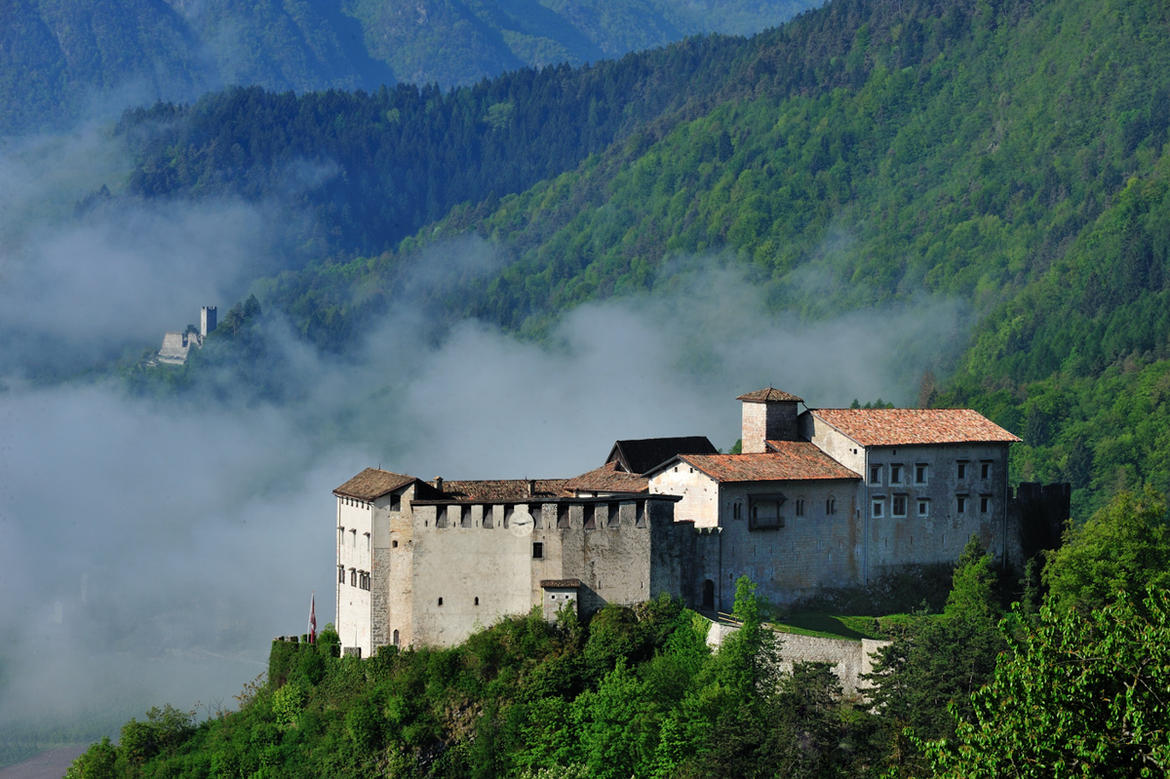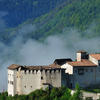Stenico castle
The Castello di Stenico is an exhibition venue of the Castello del Buonconsiglio. It dates back to more than 2000 years, and was first built as a refuge for the Stoni, from which the town takes its name

The Castello di Stenico is an exhibition venue of the Castello del Buonconsiglio.
A seat of power built on a spur overlooking the roads of communication towards the Valli Giudicarie, Castello di Stenico dates back to more than 2000 years, and was first built as a refuge for the Stoni - a proud Alpine population exterminated by the Romans - from which the town takes its name. Its history is closely tied to the Prince-Bishops of Trento, who also used to administer justice. Legend has it that prisoners were left to die of starvation in the hunger tower, and that their restless spirits still appear on full-moon nights. In the 18th century, the castle saw the beginning of its decadence with the Napoleonic occupation. The first refurbishing works began in 1910 and were later continued in 1973 by the Autonomous Province of Trento.
Visitors can access the castle on a steep ramp connecting the piazza to the town of Stenico. The frescoes housed in the main rooms are of particular interest. Nowadays the castle is an important venue and hosts exhibitions, photographic and contemporary art contests as well as concerts and other performances. Furthermore, it also hosts a prized archaeological section dedicated to local history as well as a furniture, paintings, arms and ancient tools exhibition borrowed from the collections of the Museum of the Castello del Buonconsiglio in Trento, of which it is a branch.
Notes on the accessibility to the site
When previously requested, it is possible to reach the castle by car and park at the foot of the castle (please contact the staff and display the disabled parking badge). The indicated ramp consists in a stone way connecting the car park to the entrance (at one point, under a 210 cm wide arch).
During the opening times, the indicated entrance door remains open.
The internal courtyard is paved with irregular stone slabs and cobblestones, and has a slope ranging between 11% and 15%. This courtyard gives access to the several areas – just partially visitable by people with mobility impairments. It is necessary to overcome a difference in level of 6 cm in order to reach the following areas: the ticket office, Sala del Giudizio/Judment Hall, Palazzo Hinderbach/Hinderbach Palace, Stanza del Ferro/Iron Hall, the gardens and the disabled toilets. More specifically, the doorways to these spaces include:
- one step with a height from 15 to 24 cm and a 84 cm wide door to the ticket office (inside, a 123 cm high counter);
- 9 steps (riser: 16 cm) to Sala del Giudizio (partially not accessible);
- 8 steps (riser: 16 cm) to enter Palazzo Hinderbach, where other flights of stairs lead to the upper floors;
- the way to the toilets, the gardems amd Stanza del Ferro is barrier-free.
From the entry courtyard, it is possible to reach also Cappella di San Martino/Saint Martin’s Chapel (visitors are not allowed to go inside), Sacresty (via 3 steps – 20, 20 and 13 cm high) and a break area for the visitors (via 2 steps, respectively 14 and 21 cm high), from which the lecture hall can be accessed.
The accessible toilet is fitted with grab bar on the first approached side of the wc, front-open toilet seat, hand shower and side/back flush button, accessible wash basin amd adjustable tilting mirror.
Information collected by the staff of the Cooperative Handicrea



